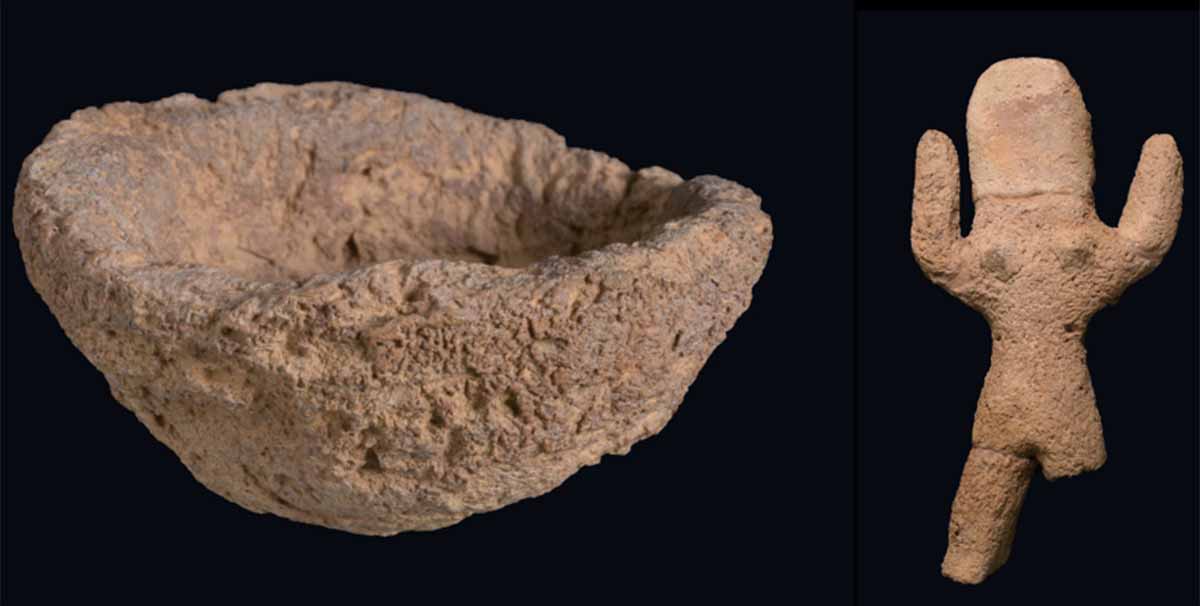Artifacts Suggest Sorcerers Were At Work on the Pilgrimage Road to Mecca
Recent discoveries adjacent to the ancient Pilgrimage Road, known as Darb al-Hajj, have led researchers to suggest that Muslim pilgrims traveling from Cairo to Mecca around four centuries ago may have sought the services of professional sorcerers on their spiritual journey. Unearthed in the Eilat region of southern Israel, the 400-year-old artifacts believed to be used in rituals provide clues into the blend of religious pilgrimage and mysticism during the Early Ottoman Period. This find not only sheds light on the practices of the time but also underscores the rich tapestry of cultural history in the region.
Eilat Artifacts Reveal a Mix of Cultural Beliefs
These findings have been published in the Journal of Material Cultures in the Muslim World, a collaborative effort by Dr. Itamar Taxel of the Israel Antiquities Authority, Dr. Uzi Avner of the Dead Sea-Arava Science Center, and Dr. Nitzan Amitai-Preiss of the Hebrew University of Jerusalem.
The trio analyzed artifacts discovered in the late 1990s at an archaeological site in the Eilat region of southern Israel. They suggest these artifacts were used in magical rituals, such as warding off the evil eye or healing diseases. The researchers explained:
“This discovery reveals that people in the Early Ottoman Period—just as today—consulted popular sorcerers, alongside the formal belief in the official religion.”
- 7,500-year-old Juniper Stump Is Believed Oldest Goddess Asherah Idol
- Selim I, A Grim Conqueror Who Vastly Extended the Ottoman Empire

The excavation area in the Eilat hills. (Itamar Taxel/Israel Antiquities Authority)
These intriguing artifacts, unearthed by Moti Shemtov, an Eilat resident, predominantly include fragments of clay globular rattles resembling table tennis balls, containing small stones that produce a sound when shaken. Other items include miniature votive incense altars, a figurine of a woman or possible deity with raised hands, other figurines, and colored quartz pebbles. Notably, the ceramic artifacts’ clay composition indicates their origin as Egypt.
"This is the first time that such a large assemblage of ritual objects of this kind has been found, especially at a temporary site and not a permanent settlement,” the report highlighted.

Quartz Pebbles found at the Eilat site. (Clara Amit/Israel Antiquities Authority)
Part and Parcel of the Pilgrimage Road?
The discovery was made adjacent to the Pilgrimage Road, known as Darb al-Hajj in Arabic. The Darb al-Hajj is an ancient route historically used by Muslim pilgrims traveling from various regions, including Cairo, across the Sinai Peninsula, and onward towards the Arabian Peninsula on their way to the holy cities of Mecca and Medina. Established and in use from the 7th century AD, this path played a crucial role in facilitating the annual Hajj pilgrimage, serving as both a physical and spiritual connector for centuries.
- On the Road to Enlightenment: 7 of the World's Most Historic Pilgrimage Routes
- Rare "Grotesque" Half-Lamp Discovered on Jerusalem’s Holiest Road

Clay incense altar. (Clara Amit/Israel Antiquities Authority)
Drawing a connection between the location of these artifacts and the Pilgrimage Road, the researchers noted:
“The find-spot of these artifacts next to the camping site, and their comparison to those known in the Muslim world, suggest that they were used in magical rituals."
Literary sources indicate that such magical ceremonies were in demand across various societal levels, including among pilgrims traveling to the holy cities of Mecca and Medina.
Further highlighting the significance of these findings, Dr. Omry Barzilai, Southern Regional Archaeologist of the Israel Antiquities Authority, mentioned that the Darb el-Hajj road is set to become a distinctive regional archaeological-touristic area. The Israel Antiquities Authority plans to develop the road and introduce educational activities underscoring its cultural heritage significance.
Eli Escusido, Director of the Israel Antiquities Authority, emphasized their dedication to researching and sharing findings from previous excavations, ensuring a comprehensive understanding of the region's rich history.
Top image: Left, Clay rattle fragment and right, clay female figurine that were recovered from the Pilgrimage Road in 1990s, that has been reevaluated. Source: Clara Amit/IAA
By Gary Manners
References
Taxel, Itamar et al. July 2023. ‘A Unique Assemblage of Late Islamic Magical Artifacts from Netafim 2: A Campsite on the Darb al-Hajj, Southern Israel’. Journal of Material Cultures in the Muslim World

















